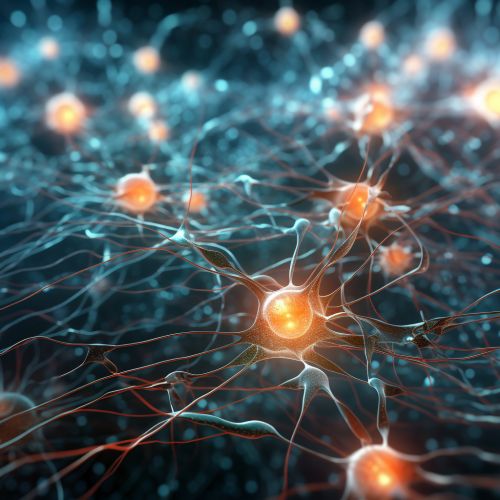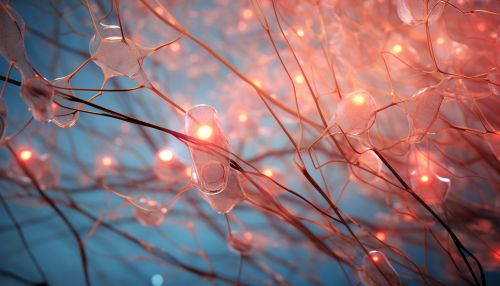Neurogenesis
Overview
Neurogenesis is the process through which new neurons, or nerve cells, are generated. This process is most active during prenatal development, when the brain is being formed. However, it continues throughout adulthood in certain regions of the brain. The discovery of adult neurogenesis and its role in learning, memory, and mood regulation has revolutionized neuroscience and offers potential therapeutic strategies for neurodegenerative diseases and mood disorders.
Historical Background
The concept of neurogenesis has undergone significant evolution since its inception. Initially, it was believed that the adult brain was incapable of producing new neurons, a theory known as the "no new neuron" doctrine read more. This belief was based on the observations of early neuroanatomists such as Santiago Ramón y Cajal, who declared in 1928 that the adult brain was characterized by a fixed number of neurons.
However, this doctrine was challenged in the 1960s by Joseph Altman and Gopal Das, who provided evidence of neurogenesis in the adult rat brain. Their work was initially met with skepticism, but subsequent research confirmed their findings and expanded our understanding of neurogenesis.


Mechanism of Neurogenesis
Neurogenesis involves several stages, including the proliferation of neural stem cells, their differentiation into neurons, and the integration of these new neurons into existing neural circuits. This process is regulated by a complex interplay of intrinsic factors, such as gene expression, and extrinsic factors, such as environmental stimuli and hormonal influences.
Neural Stem Cells
Neural stem cells are self-renewing, multipotent cells that give rise to neurons, astrocytes, and oligodendrocytes. These cells reside in specific regions of the brain, known as neurogenic niches, where they are maintained in a quiescent state until activated by specific signals.
Proliferation
The first stage of neurogenesis is the proliferation of neural stem cells. This process is regulated by various growth factors, hormones, and neurotransmitters. For example, brain-derived neurotrophic factor (BDNF) promotes the proliferation of neural stem cells, while corticosteroids inhibit this process.
Differentiation
Following proliferation, neural stem cells undergo differentiation to become neurons. This process is guided by a complex network of transcription factors that regulate gene expression. For instance, the transcription factor NeuroD promotes neuronal differentiation, while the transcription factor Sox2 maintains the stem cell state.
Integration
The final stage of neurogenesis is the integration of new neurons into existing neural circuits. This process involves the growth of dendrites and axons, the formation of synapses, and the establishment of functional connections with other neurons. This stage is critical for the functional impact of neurogenesis on learning and memory.
Regions of Adult Neurogenesis
In the adult brain, neurogenesis occurs primarily in two regions: the subgranular zone (SGZ) of the hippocampus and the subventricular zone (SVZ) of the lateral ventricles.
Subgranular Zone
The SGZ is located within the dentate gyrus of the hippocampus, a region involved in learning and memory. Neurogenesis in the SGZ is thought to contribute to the formation of new memories and the regulation of mood.
Subventricular Zone
The SVZ is located along the lateral ventricles of the brain. Neural stem cells in the SVZ give rise to new neurons that migrate to the olfactory bulb, where they contribute to the sense of smell.
Role of Neurogenesis
Neurogenesis plays a crucial role in learning, memory, and mood regulation. The generation of new neurons in the hippocampus, for instance, is thought to enhance cognitive flexibility and memory consolidation. Moreover, alterations in neurogenesis have been implicated in various neurological and psychiatric disorders, including Alzheimer's disease, Parkinson's disease, depression, and anxiety.
Learning and Memory
Research has shown that neurogenesis in the hippocampus is associated with improved learning and memory. Specifically, the integration of new neurons into existing neural circuits is thought to enhance cognitive flexibility and memory consolidation.
Mood Regulation
Neurogenesis is also involved in mood regulation. Studies have found that stress and depression are associated with decreased neurogenesis in the hippocampus, while antidepressant treatment and physical exercise can enhance neurogenesis.
Neurogenesis and Disease
Alterations in neurogenesis have been implicated in various neurological and psychiatric disorders. For example, decreased neurogenesis in the hippocampus has been observed in Alzheimer's disease and depression, while increased neurogenesis has been reported in temporal lobe epilepsy.
Alzheimer's Disease
In Alzheimer's disease, a progressive neurodegenerative disorder characterized by memory loss and cognitive decline, neurogenesis in the hippocampus is significantly reduced. This reduction is thought to contribute to the cognitive deficits observed in this disease.
Depression
In depression, a mood disorder characterized by persistent feelings of sadness and loss of interest, neurogenesis in the hippocampus is also decreased. Antidepressant treatment, however, can enhance neurogenesis and has been associated with improved mood and cognitive function.
Therapeutic Potential of Neurogenesis
The discovery of adult neurogenesis has opened up new avenues for the treatment of neurological and psychiatric disorders. By enhancing neurogenesis, it may be possible to replace lost neurons, improve cognitive function, and alleviate mood disorders. However, much research is still needed to fully understand the mechanisms of neurogenesis and to develop effective therapeutic strategies.
